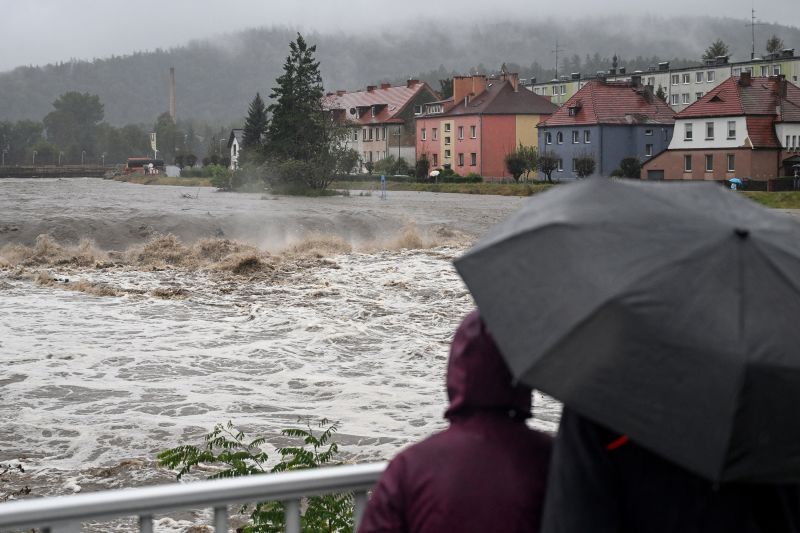BODY:
In a fatal turn of events, the mightiest downpours in several decades have inundated parts of central and eastern Europe, resulting in the untimely death of six individuals. A catastrophe of such magnitude has left cities paralyzed, rivers flowing over their banks and the authorities scrambling to provide aid and relief to the affected residents.
Unprecedented rainfall unexpectedly hit the central and eastern regions of Europe, exceeding all previous records for this time of the year. The surge of water swelled rivers to dangerous heights and triggered landslides leaving paths of devastation in their wake and claiming at least six lives. The weather service reported rain levels reaching up to 40mm per hour in some areas, a parameter unseen in recent history.
The fatalities were reported from diverse locations. Two lives were lost in the outskirts of the Romanian capital, Bucharest, where a sudden flash flood overturned their vehicle. In Bulgaria, a septuagenarian could not combat the vicious weather and succumbed to its brutality. The other three unfortunate casualties were from Poland, caught in the torrential rains which caused dangerous landslides in the mountainous regions.
Emergency services across the region have been working relentlessly to mitigate the disastrous effects of the rainfall. Rescue teams are also painstakingly searching for several missing individuals feared to have been swept away by the deluge. The full extent of the devastation is yet to be revealed as emergency services continue their arduous task of reaching marooned communities and giving succor to the affected.
In various parts of central and eastern Europe, transport systems reached a near standstill due to the damaging impact of the rains. Roads have been submerged, train services have been interrupted, and many flights have been grounded, leaving thousands stranded and restricted in movement.
The floods have also caused immense property damage, with homes, businesses, and infrastructure devastatingly impacted. Thousands have been forced to seek temporary shelter as their homes were inundated. Power outages have been reported in several regions, and fresh water supplies have also been affected, prompting fears of a potential humanitarian crisis.
The extent of these floods underscores the severity of the weather changes being witnessed in this age of climate change. Scientists have been investigating these extreme weather patterns, endeavoring to forecast and mitigate similar disasters in the future. They suspect that rising global temperatures could be intensifying precipitation patterns, leading to drastic weather events such as these.
In response to this calamity, various governments and international humanitarian organizations have extended their support to the affected regions. Food, clean water, temporary shelter, and medical assistance are being provided to those displaced or affected by the storm, while continuous efforts are underway to restore normalcy in these regions.
This unexpected catastrophe has raised critical questions about preparedness and the necessity for construction and infrastructure that can withstand such extreme weather events. As central and eastern Europe come to terms with this disaster, the need for strategic planning and prevention measures to combat the increasing threat of climate change becomes ever more pressing.
As the region braces itself for further potential rainfall, it is evident that more comprehensive designs meant for sustainable urban development and flood management systems need to be put in place, to protect human lives and property from such devastations in the future. Already, there is an increased call for action to tackle the climate crises that are responsible for such erratic weather patterns.




